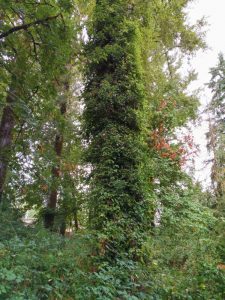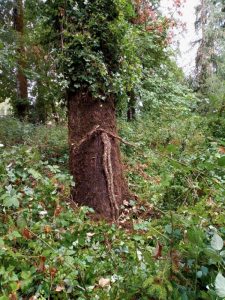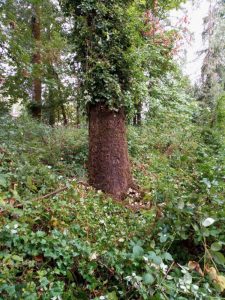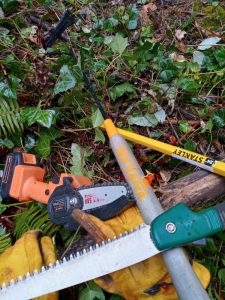Ivy Suffocates Trees
With the drastic effects of climate change around the Globe in 2021, the need for carbon capture solutions has never been more urgent. Dead and dying trees release mass amounts of carbon into earth’s atmosphere every year. Saving trees from death by Ivy is easy to do, but it also takes hard work. Teamwork and awareness can make it happen. We need community involvement to save these trees. The entire Portland metro areas has hundreds of thousand of trees that are being weakened through Ivy suffocation. Contact earthontheedge.org and find out ways you can help.
15 Negative Impacts of English Ivy
01
Chokes out native plants
02
Blocks sunlight from host trees
03
Damages tree bark
04
Weakens the host tree’s structure
05
Adds weight to trees
06
Steals nutrients and water
from the host trees
07
When Ivy reaches tree top
host tree will die
08
Ivy prevents natural forest fertilization cycles
09
Ivy increases tree “blow-downs
10
Ivy disrupts plant succession
and forest growth
11
Ivy destroys forest canopy and increases invasive plant spread
12
Ivy increases the risk of erosion on slopes and hillsides.
13
Ivy reduces diversity and food sources for desirable insects
and animals.
14
Fruit produced by Ivy has almost no nutritional value for animals
and is toxic to many varieties of songbirds.
15
English Ivy encourages unwanted wildlife and insects. Ivy's intertwined mass of vines provide haven for rodents, especially rats. Ivy also creates shallow pools of water in its leaves that provide ideal breeding places for mosquitoes.
Earth On The Edge
featured on KGW!
Impact the world one
tree at a time!

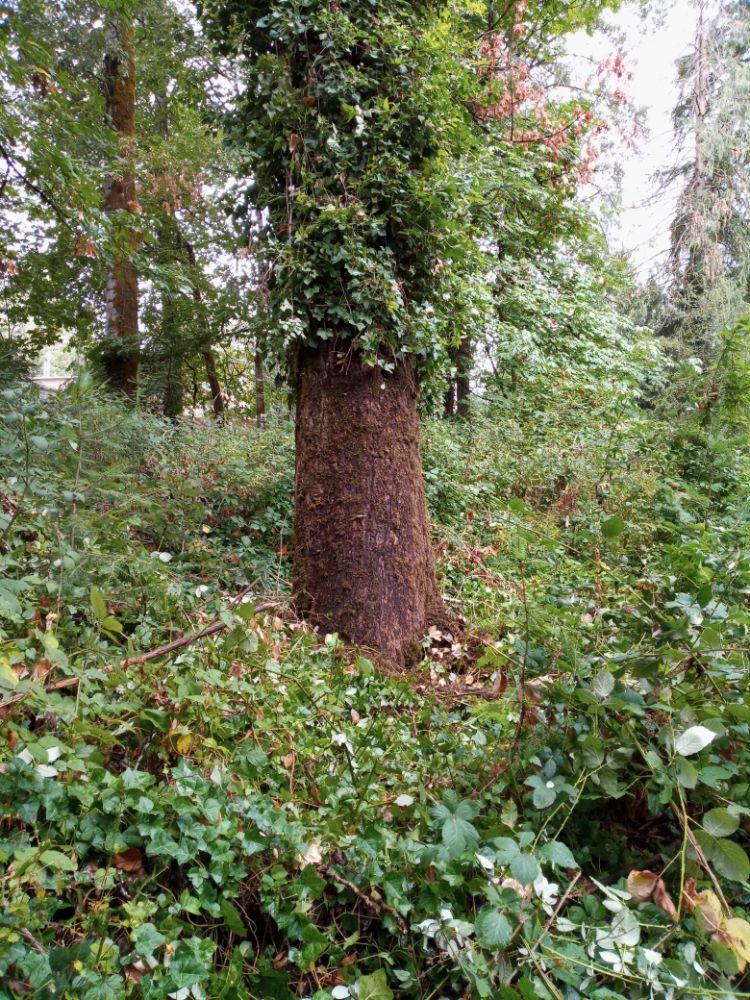
How to remove English Ivy
Project Pictures

